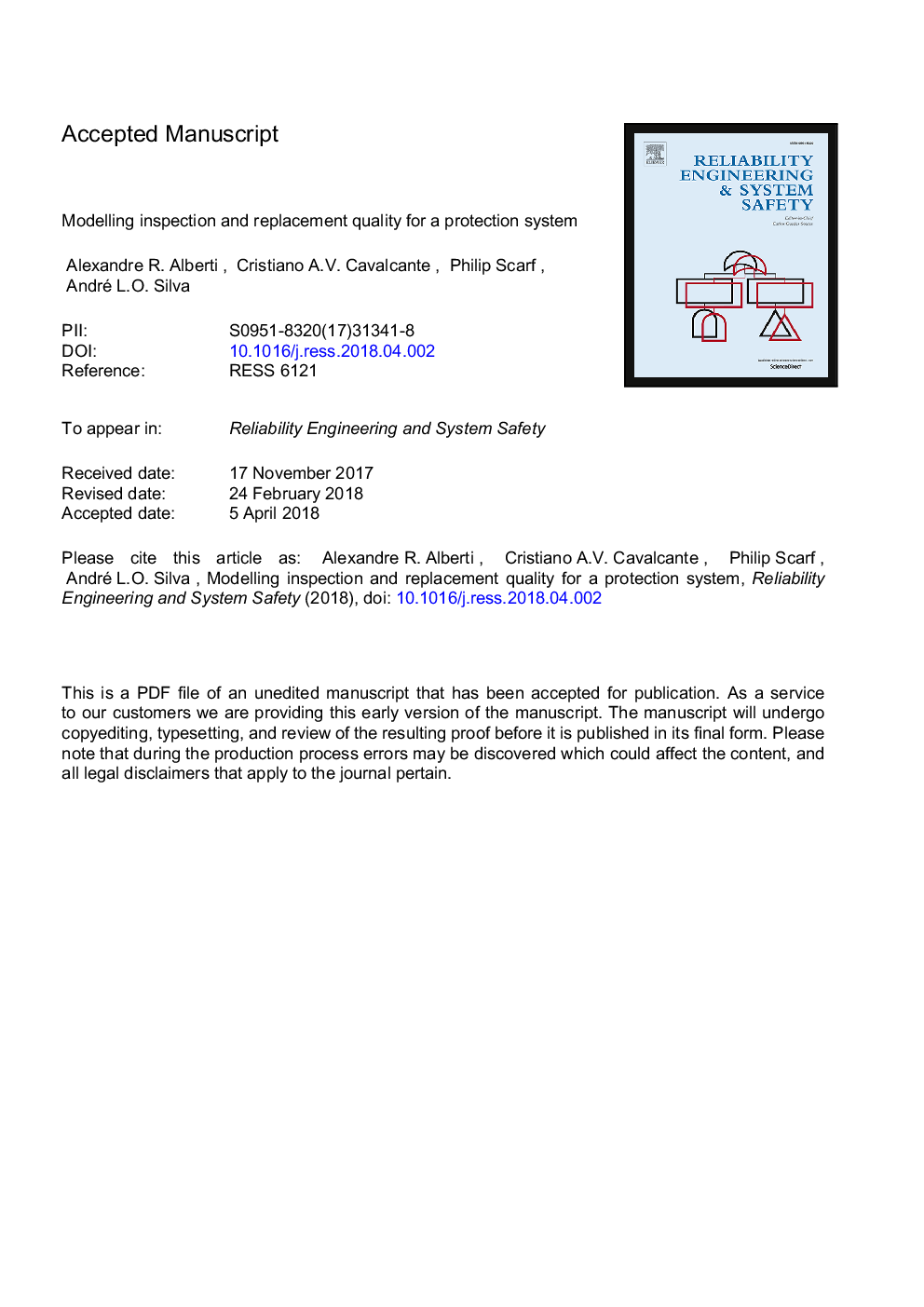| Article ID | Journal | Published Year | Pages | File Type |
|---|---|---|---|---|
| 7195138 | Reliability Engineering & System Safety | 2018 | 19 Pages |
Abstract
An inspection and replacement policy for a protection system is described by a mathematical model that incorporates multiple aspects of maintenance quality. A three-state component failure model is assumed, with a defective state preceding failure. The quality of maintenance intervention is modelled by supposing that inspections may misclassify defects (false positives and false negatives) and further that an inspection may induce a defect. The quality of replacement is modelled by supposing that a component arises from a heterogeneous population, composed of weak and strong items and with the mixing parameter determining quality. Isolation valves used in water distribution systems motivate the model development, and a case study is considered in this context. We evaluate the impact of these aspects of the quality of maintenance upon cost and production losses. Defect induction is found to be a key determinant of the cost-optimal policy. The proposed model allows us to verify conditions that justify investment in higher quality maintenance, and thus to provide guidance for prioritization of this investment.
Keywords
Related Topics
Physical Sciences and Engineering
Engineering
Mechanical Engineering
Authors
Alexandre R. Alberti, Cristiano A.V. Cavalcante, Philip Scarf, André L.O. Silva,
